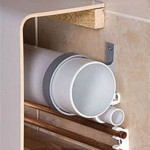Essential Aspects of Silicone or Putty for Bathroom Sink Drain
Maintaining a properly functioning bathroom sink drain is crucial for preventing leaks, clogs, and unpleasant odors. Silicone and putty are two common materials used to seal around the drain and ensure a watertight connection. Understanding the essential aspects of these materials is paramount for effective bathroom maintenance.
Types and Applications
Silicone and putty come in various types, each with specific properties and applications. Silicone sealants are typically used for sealing smaller gaps and joints around the drain flange, while plumber's putty is more suitable for larger gaps and irregular surfaces. Understanding the differences between these materials ensures selecting the appropriate one for your drain.
Durability and Longevity
The durability and longevity of silicone or putty play a significant role in maintaining a leak-free drain. Silicone sealants are known for their excellent resistance to moisture, chemicals, and temperature fluctuations. They can last for many years without breaking down or deteriorating. Plumber's putty, on the other hand, is less durable and may require more frequent replacement.
Ease of Application
The ease of application is crucial for DIY enthusiasts or homeowners who prefer to fix their bathroom drains themselves. Silicone sealants are typically applied using a caulking gun, which provides precise application and smooth results. Plumber's putty, on the other hand, is hand-molded and requires a bit more skill to apply evenly.
Cost and Availability
The cost and availability of silicone or putty can be important considerations when choosing a sealant. Silicone sealants are generally more expensive than plumber's putty but offer better durability and longevity. Plumber's putty is more affordable but may require more frequent replacement.
Environmental Impact
In recent years, the environmental impact of building and maintenance materials has become increasingly important. Silicone sealants can release volatile organic compounds (VOCs) during application, which can contribute to indoor air pollution. Plumber's putty, on the other hand, is typically VOC-free.
Conclusion
Choosing the right silicone or putty for your bathroom sink drain is crucial for ensuring a watertight and odorless connection. Understanding the essential aspects of these materials, including their types, durability, ease of application, cost, and environmental impact, empowers homeowners to make informed decisions for effective bathroom maintenance.

Should I Use Plumbers Putty Or Silicone For Sink Drain

Plumber S Putty Or Silicone Caulk Which Is Best Tinged Blue
Plumbers Putty Vs Silicone What S The Difference

How To Use Plumber S Putty
Plumber S Putty Or Silicone Caulk Which Is Best Tinged Blue

How To Use Plumber S Putty It As Easy Play Doh

How To Seal A Bathroom Sink Drain Caulk Vs Putty

How To Seal A Bathroom Sink Drain Caulk Vs Putty

Plumbers Putty Vs Silicone The Key Differences Calgary Plumber And Drains
Plumbers Putty Vs Silicone What S The Difference







